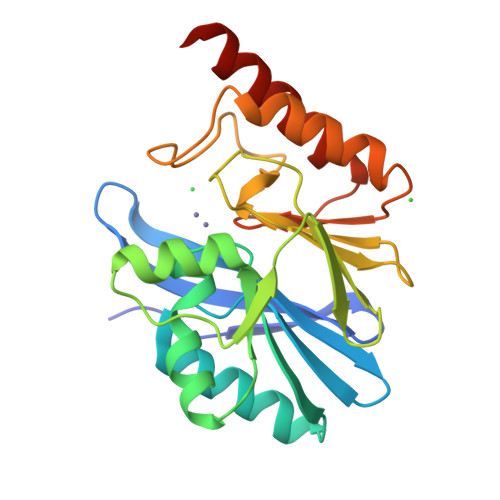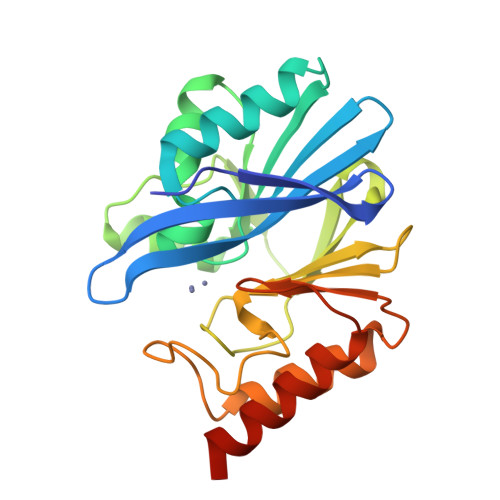Structural Insights into TMB-1 and the Role of Residues 119 and 228 in Substrate and Inhibitor Binding.
Skagseth, S., Christopeit, T., Akhter, S., Bayer, A., Leiros, H.S.(2017) Antimicrob Agents Chemother 61
- PubMed: 28559248
- DOI: https://doi.org/10.1128/AAC.02602-16
- Primary Citation of Related Structures:
5MMD - PubMed Abstract:
Metallo-β-lactamases (MBLs) threaten the effectiveness of β-lactam antibiotics, including carbapenems, and are a concern for global public health. β-Lactam/β-lactamase inhibitor combinations active against class A and class D carbapenemases are used, but no clinically useful MBL inhibitor is currently available. Tripoli metallo-β-lactamase-1 (TMB-1) and TMB-2 are members of MBL subclass B1a, where TMB-2 is an S228P variant of TMB-1. The role of S228P was studied by comparisons of TMB-1 and TMB-2, and E119 was investigated through the construction of site-directed mutants of TMB-1, E119Q, E119S, and E119A (E119Q/S/A). All TMB variants were characterized through enzyme kinetic studies. Thermostability and crystallization analyses of TMB-1 were performed. Thiol-based inhibitors were investigated by determining the 50% inhibitory concentrations (IC 50 ) and binding using surface plasmon resonance (SPR) for analysis of TMB-1. Thermostability measurements found TMB-1 to be stabilized by high NaCl concentrations. Steady-state enzyme kinetics analyses found substitutions of E119, in particular, substitutions associated with the penicillins, to affect hydrolysis to some extent. TMB-2 with S228P showed slightly reduced catalytic efficiency compared to TMB-1. The IC 50 levels of the new thiol-based inhibitors were 0.66 μM (inhibitor 2a) and 0.62 μM (inhibitor 2b), and the equilibrium dissociation constant ( K D ) of inhibitor 2a was 1.6 μM; thus, both were more potent inhibitors than l-captopril (IC 50 = 47 μM; K D = 25 μM). The crystal structure of TMB-1 was resolved to 1.75 Å. Modeling of inhibitor 2b in the TMB-1 active site suggested that the presence of the W64 residue results in T-shaped π-π stacking and R224 cation-π interactions with the phenyl ring of the inhibitor. In sum, the results suggest that residues 119 and 228 affect the catalytic efficiency of TMB-1 and that inhibitors 2a and 2b are more potent inhibitors for TMB-1 than l-captopril.
Organizational Affiliation:
The Norwegian Structural Biology Centre (NorStruct), Department of Chemistry, Faculty of Science and Technology, UiT The Arctic University of Norway, Tromsø, Norway.





















